Tracker Diagrams
This document contains supplemental diagrams for my Software
Carpentry Tracker proposal, plus some exposition describing
them. The collection of documents includes mostly use cases plus
a few issue lifecycle state diagrams:
Overarching Use Cases
This diagram acts as a map into the specific use case diagrams
for the tracker, presenting an overview of the tracker activities, the
Actors, and indicating the corresponding subdiagrams. Just
below this diagram i'll describe the Actors.
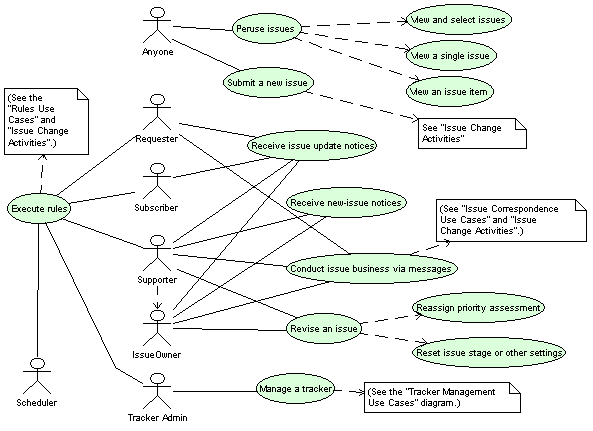
- Anyone - 'Anyyone' is a pseudo actor, denoting any of the
other actors plus the catchall 'anonymous' one. The point is
that any of the actors can, eg, submit an issue or browse the
collection of them.
- Requester - An issue's Requester is person who submitted it.
In open trackers, anonymous visitors can peruse and submit
issues. In dedicated trackers, only designated members can
visit the tracker.
- Subscriber - A member who elected to be among those
notified about issue postings.
- Supporter - A member selected by the tracker administrator
to be among those in the loop on the handling of issue.
Supporters are notified about the arrival of new issues, they
can take responsibility for handling of issues by 'accepting'
them - thereby becoming the IssueOwner, and they have reserved
privileges for changing issue stage and viewing private
issues.
- IssueOwner - Supporters who have accepted issues become
owners of those issues. Multiple supporters may accept an
issue, so there can be multiple owners.
- TrackerOwner - The member who created the tracker (or
another member delegated the responsibility by the tracker
creator), privileged to configure the tracker and responsible
for directing handling of neglected issues.
- Scheduler - A system actor responsible for running the
rules associated with the tracker.
Issue Correspondence Use Cases
This diagram shows the central activities of the tracker,
participants correspondence in an issue. Along with just
posting more info about an issue, just about all actions with
respect to the issue are conducted through submission of new
messages.
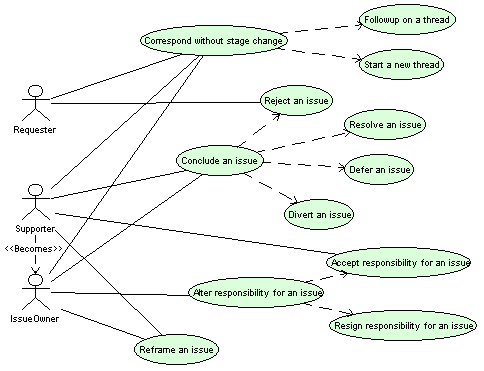
Tracker Management Use Cases
This diagram shows the tracker administrator's management
activities.
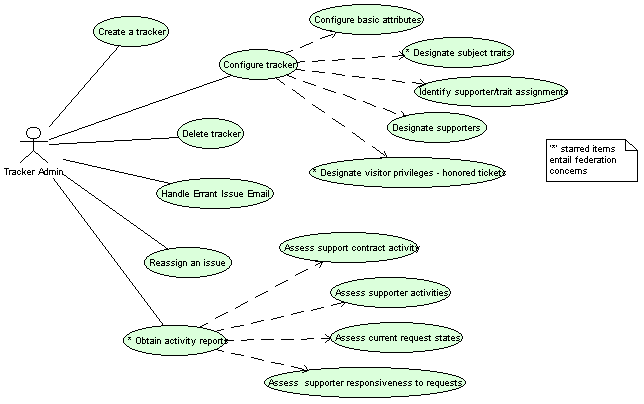
Rules Use Cases
This diagram shows the prospective rules that can affect the
disposition of an issue according to changes in its stage,
passage of time (like those with supporter responses past due),
and so forth.
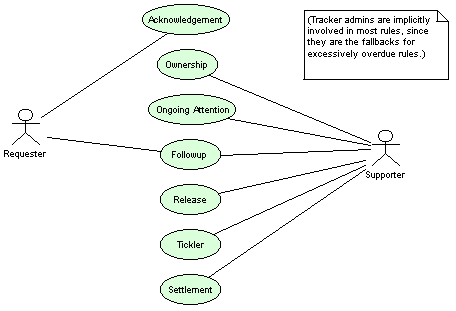
Issue Stage State Diagram
This diagram presents the legitimate stage transitions an issue
can take. See also the subsequent diagram, which tries to convey
more specifics about the issue lifecycle.
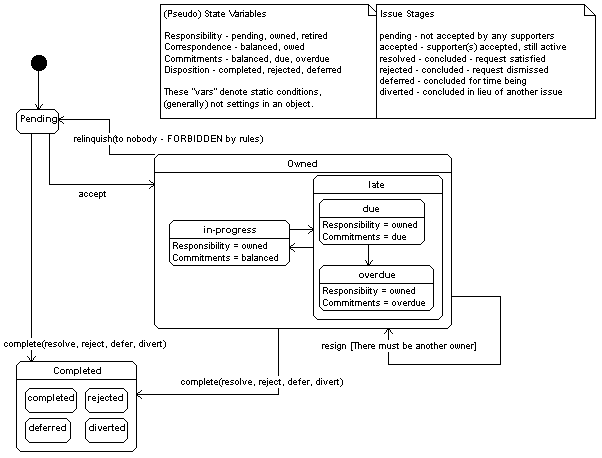
Issue Lifecycle State Diagram
Like the last one, this diagram also presents the legitimate
stage transitions an issue can take. It adds specifics about
the issue situations, and also indicates the Actor roles and
their changes accompanying particular actions. (This diagram
probably betrays standard UML practices, in well-intentioned but
perhaps misguided ways...-)
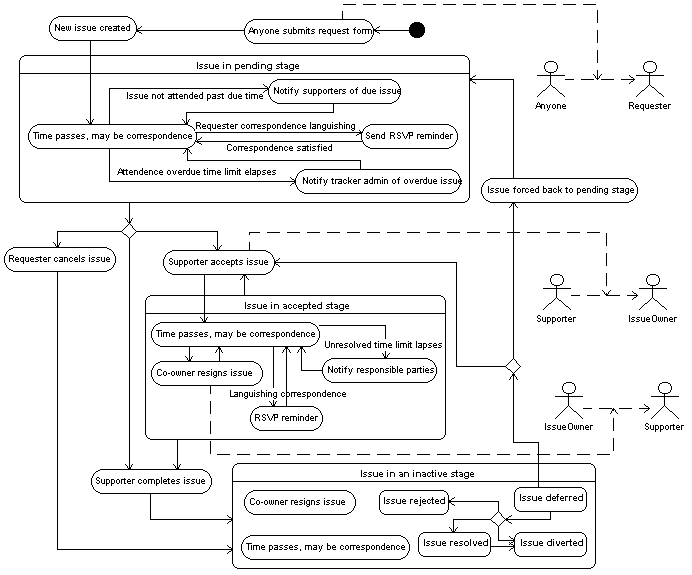
Ken Manheimer
Last modified: Thu Mar 30 14:04:03 EST 2000